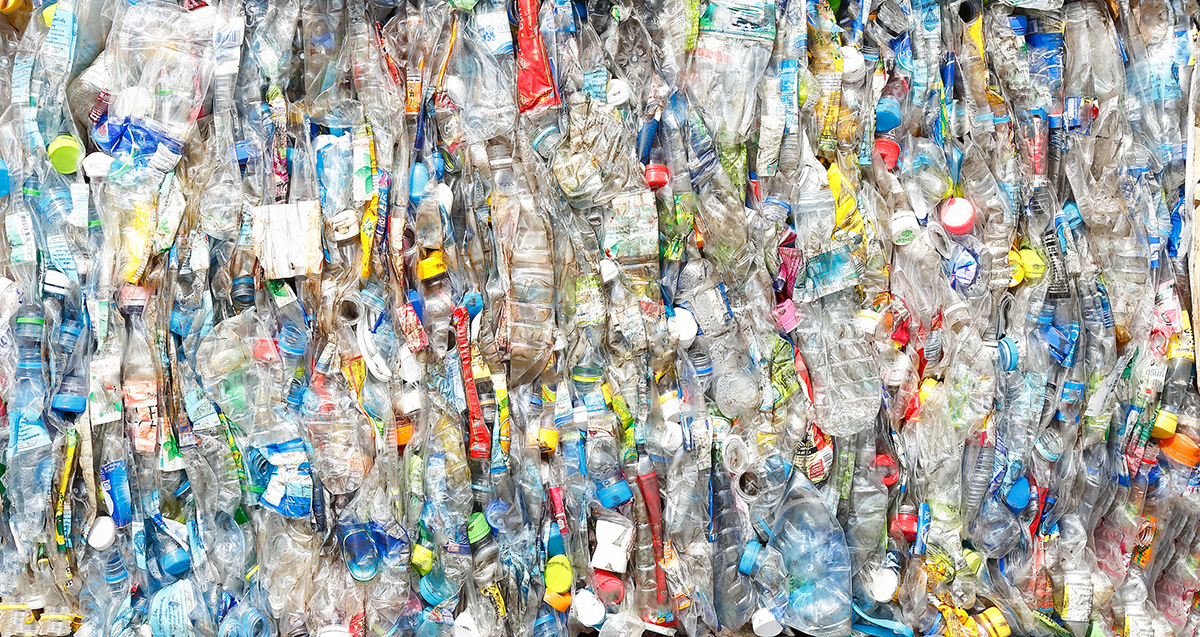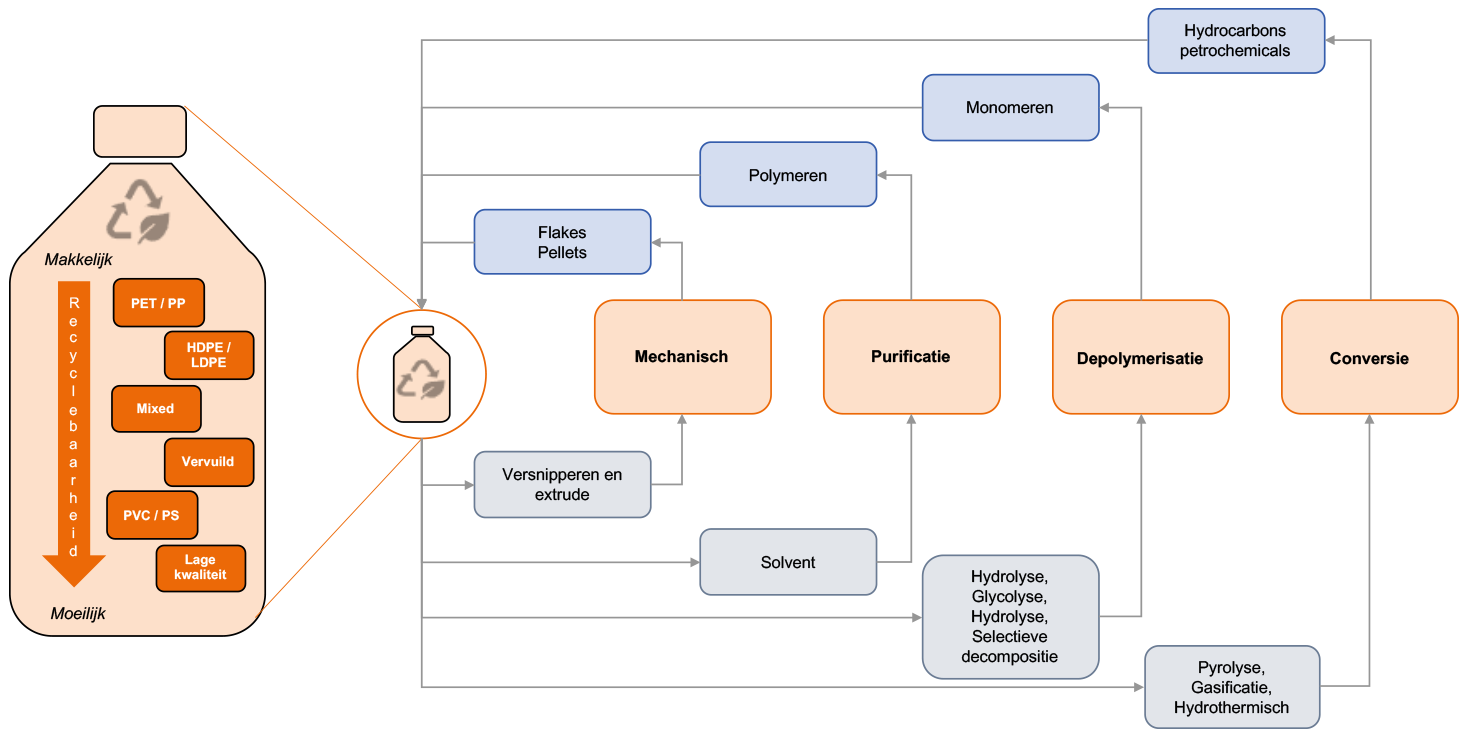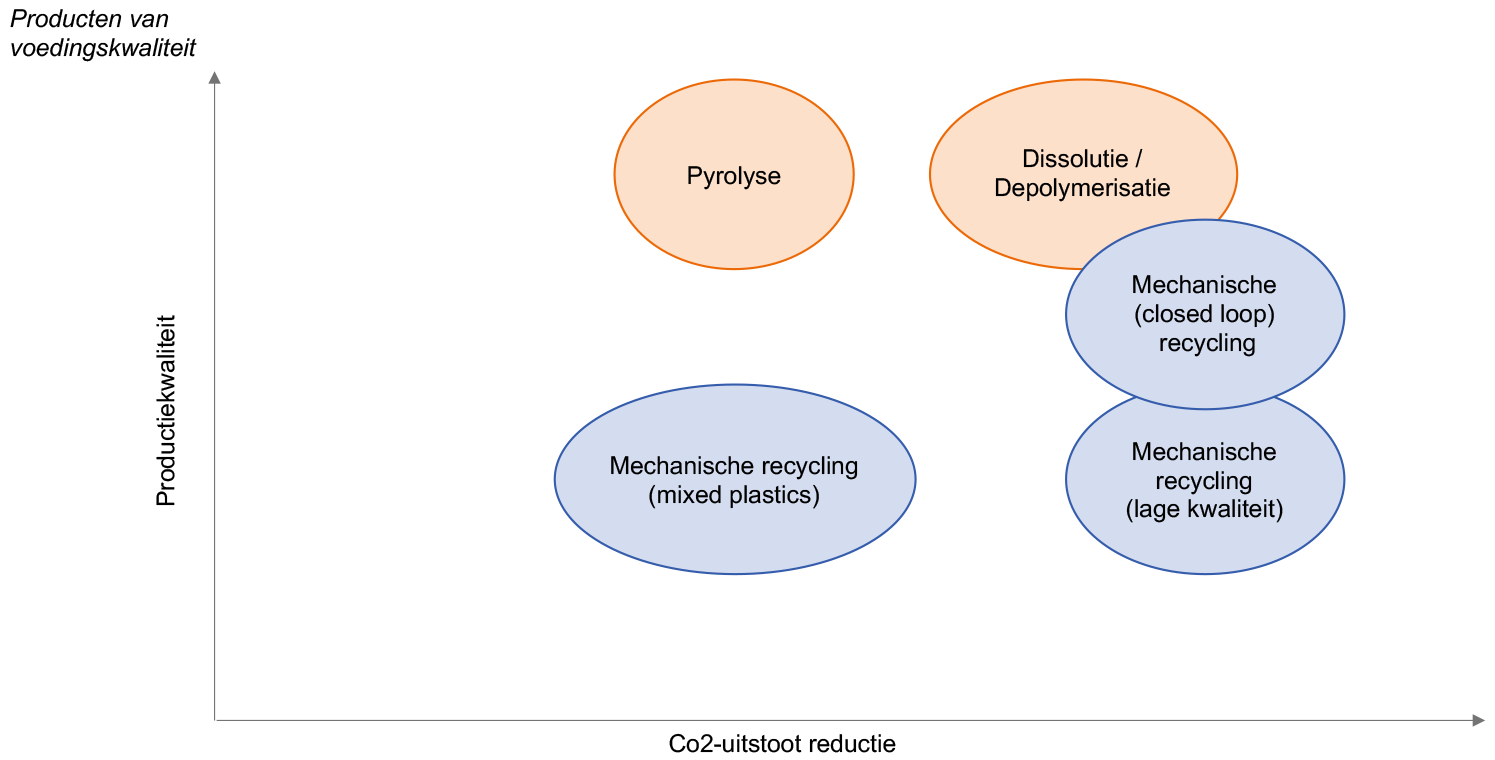News
Plastic recycling and the future
Optimizing plastic recycling in the Netherlands is becoming increasingly urgent due to growing consumption and tighter policy pressure, which calls for innovations and chain cooperation.

In the Netherlands, about 80% of all waste is currently recycled, according to waste processors. A significant portion of this is incinerated to generate energy and heat (Waste to Energy). The CO2 emissions released in the process are partially captured and supplied to the horticultural sector. This form of energy generation is likely to fall under the EU Emission Trading System to reduce waste and encourage recycling.
Plastic makes up a substantial portion of the waste that is incinerated. It is a versatile material that can be used in different ways depending on its composition. Plastic is easy to handle, light and extends the shelf life of perishable goods, but is not yet fully recyclable. Often plastics contain additives or are combined with other materials, making recycling difficult.
The use of plastic is expected to increase further in the coming years, so it is important to optimize recycling opportunities. According to CE Delft, 25% of plastic was reused in 2020 and now it would be around 30%. It is therefore important to increase this percentage substantially in the coming years.
There are several challenges to accelerating recycling: knowledge, technical developments, chain cooperation, policy and financing. Changes in EU and Dutch policy in this area may even make acceleration necessary for parties.
Plastic waste can be divided into four streams: Easily recyclable (e.g., PET and HDPE), mixed contaminated waste, complex waste and non-recyclable. These streams can serve as "feedstock" (raw material) for various recycling methodologies that are shown schematically below.
Plastic recycling methods
Substantial investment is needed to scale up recycling to 500 Kton by 2050. At least EUR 500 mln is needed for innovations and scaling up which can be brought together by grants, innovation and venture capital and bank loans. If the existing and already realized plans succeed, the CO2 impact is 250 to 760 Kton compared to current processing. As an aside, we note that in the recent past three recycling companies have gone bankrupt (Umincorp, Ecocircle, TRH Emmen and Ioniqa) which was partly caused by imports of cheap plastic.
The most promising method for CO2 reduction and plastic-to-plastic yield is mechanical recycling with monostream and depolymerization. The problem, however, is that plastics often contain additives or are combined with other materials, making mechanical recycling difficult. The quality of the raw material is therefore crucial, as is the price to make the process profitable. Currently, significant capacity expansion is expected in chemical recycling because this method can process plastics that are difficult to recycle, such as via pyrolysis.
Correlation plastic-to-plastic yield with CO2 reduction
Source: CE Delft
In addition to funding and innovation, agreements are needed with plastics producers and packers to purchase the end product from recyclers at an acceptable price level in the long run. Also, a uniform mass balance needs to be developed which means describing the mass of a given substance that enters a system, leaves it and is produced in a given time (based on the law of conservation of mass). Furthermore, CO2 impact must be assigned to production chains. And also, a uniform Life Cycle Assessment (LCA) system and/or Carbon Tracking system must be tested and developed (see product quality and Co2 reduction matrix). Finally, product design specifications must be established that allow for both mechanical and chemical recycling.
A digital product passport (DPP) can be helpful in these developments. Such a passport provides comprehensive information about the product throughout its life cycle and is becoming increasingly important within the context of transparency, sustainability, circular economy and regulation, especially within the EU. The DPP contains information on production processes, origin, life cycle, CO2 emissions and carbon footprint. It also provides insight into the composition, materials used, chemicals and components as well as to what environmental and safety aspects and what recycling options the product has at the end of its life.
There is currently insufficient feedstock available in the Netherlands to make optimal use of the recycling facilities. However, this is available in surrounding countries that are not yet recycled for various reasons (e.g. low yield and cost collection). That unused feedstock could be imported here.
It is further important that clear decisions be made in terms of:
- Make trade-off framework regarding when to recycle mechanically and when to recycle chemically
- Involve NGOs in site selection
- Strongly reduce amount of waste going to incineration
- Investing in collection and sorting infrastructure
Product quality and Co2 reduction matrix
Source: CE Delft
It is important that preferably there will be EU regulations that ensure a 'level playing field' in the field of (plastic) recycling. In addition to Dutch initiatives such as the Circular Economy Implementation Program and the Plastic Plan NL, the EU Strategy Plastics CE/ EU circular economy package is particularly important because it applies to the whole of Europe.
New regulations should ensure that a minimum amount of recycled product is used in other products and that chemical recycling is accepted. In doing so, a "level playing field" must be created for feedstock within the EU.
Our conclusion is that there are major challenges to realizing all recycling ambitions in current market and regulatory environments.
Contact the team personally
Would you like to spar with one of our experts? We are ready to talk with you.

Ronald van Rijn
Managing Partner JBR

Rogier Tigchelaar
Senior Consultant Corporate Finance

Frank Steenhuisen
Associate


